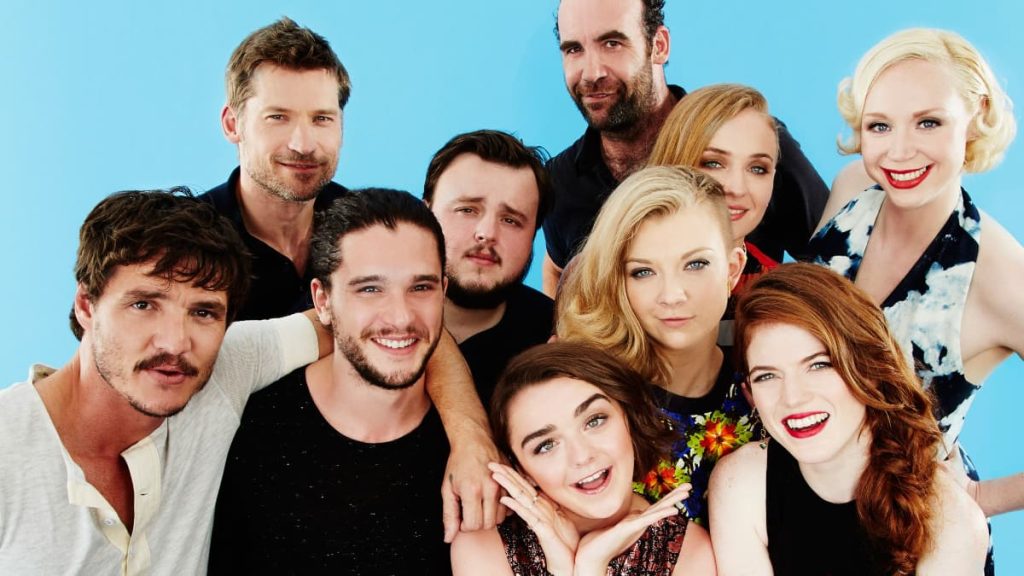
The game of thrones cast has captivated audiences worldwide with their stellar performances, bringing the epic world of Westeros to life. From the very first season, the game of thrones cast demonstrated remarkable dedication, immersing themselves in complex characters and intricate storylines. Beyond their on-screen presence, the game of thrones cast built unforgettable bonds, navigated challenging filming schedules, and embraced physically demanding roles. Understanding the behind-the-scenes dynamics offers fans a deeper appreciation for the effort, chemistry, and talent that went into creating this legendary series. The commitment of the game of thrones cast to authenticity, emotional depth, and skillful portrayals remains unmatched in modern television. Whether it was the main heroes or the lesser-known characters, every member of the game of thrones cast contributed significantly to the show’s success. From rehearsals to stunt work, makeup sessions to wardrobe fittings, the game of thrones cast underwent a transformative journey. This exploration into the game of thrones cast reveals stories, secrets, and anecdotes that fans may not have known, offering an intimate look at life behind the cameras.
Key Takeaways
- The game of thrones cast demonstrated exceptional commitment to their roles, often performing dangerous stunts and enduring harsh conditions.
- Relationships among the game of thrones cast enhanced on-screen chemistry and added authenticity to performances.
- Behind-the-scenes stories reveal the personal challenges, triumphs, and experiences of the game of thrones cast during filming.
- Both the core ensemble and supporting cast played pivotal roles in shaping the show’s cultural impact.
The Core Ensemble: Main Cast on Game of Thrones
The main characters of the game of thrones cast became household names, each delivering performances that left a lasting impression. Emilia Clarke, portraying Daenerys Targaryen, endured rigorous training for her role, learning to handle dragons and master intense emotional scenes. Kit Harington, as Jon Snow, performed many of his stunts, including sword fights and horseback sequences, highlighting the physical dedication of the game of thrones cast. Peter Dinklage, portraying Tyrion Lannister, brought wit, intelligence, and vulnerability to the screen, earning critical acclaim and numerous awards. Lena Headey, as Cersei Lannister, embraced the complexity of a morally ambiguous character, often spending hours in makeup and costume preparation. The core members of the game of thrones cast frequently collaborated on developing character arcs, improvising scenes, and contributing creatively to scripts, strengthening the authenticity of their portrayals.
Supporting Cast on Game of Thrones: Integral Roles
The supporting members of the game of thrones cast were equally crucial in creating the immersive world of Westeros. Characters like Gwendoline Christie as Brienne of Tarth, Sophie Turner as Sansa Stark, and Maisie Williams as Arya Stark added depth and diversity to the storylines. These actors endured intense fight choreography, physical transformations, and emotional storytelling. The game of thrones cast supporting members also worked closely with stunt teams and directors to ensure each scene maintained realism and intensity. Many supporting actors shared anecdotes about on-set camaraderie, pranks, and memorable moments that contributed to a positive filming environment. Their dedication demonstrates that the game of thrones cast’s success was not limited to the leading roles but extended to every individual contributing to the show’s narrative and visual grandeur.
Behind the Scenes
Filming Game of Thrones involved extensive planning, coordination, and creativity, with the game of thrones cast at the heart of every production decision. Sets were elaborate, often requiring weeks of preparation, and the cast had to adapt quickly to changes in location, weather, and script adjustments. Costume and makeup departments transformed actors into the rich, historical-inspired characters of Westeros, a process that sometimes took hours daily. The game of thrones cast underwent rigorous training for swordplay, horse riding, and combat scenes to ensure realism on camera. Special effects, dragon sequences, and large-scale battles demanded precise timing, rehearsals, and trust among the game of thrones cast. Many cast members also participated in promotional activities, interviews, and fan conventions, which further strengthened the public’s connection to the game of thrones cast and the show itself.
The Stunt Work and Training
Stunt coordinators worked closely with the game of thrones cast to ensure safety while delivering thrilling action scenes. The actors performed fight sequences, climbs, and falls with professional guidance, demonstrating both courage and skill. Training included swordsmanship, hand-to-hand combat, and choreographed battle scenes, all contributing to the authenticity of the game of thrones cast performances. Physical endurance, mental preparation, and teamwork were key factors in executing these demanding sequences.
On-Set Relationships and Bonds
The game of thrones cast often described the set as a second family, with friendships and mentorships forming naturally over years of working together. Cast members supported each other during emotionally intense scenes and shared lighter moments to maintain morale. These bonds enhanced on-screen dynamics, as genuine friendships translated into believable relationships and chemistry among characters.
Production Secrets and Trivia
- The game of thrones cast used practical sets, props, and costumes extensively, with CGI added sparingly to maintain realism.
- Many cast members stayed in character even during breaks to maintain immersion and continuity.
- Improvised moments by the game of thrones cast were sometimes kept in the final episodes, showcasing spontaneity and creativity.
- The cast often participated in cultural and historical research to ensure accurate portrayals of their characters’ lifestyles, beliefs, and strategies.
Frequently Asked Questions
Q: Who were the most challenging characters for the game of thrones cast to portray?
A: Many actors cited emotionally complex characters like Cersei Lannister and Jon Snow as challenging due to their evolving storylines and intense scenes.
Q: How much training did the game of thrones cast undergo?
A: The main and supporting cast underwent extensive training, including sword fighting, horseback riding, stunt coordination, and combat techniques.
Q: Did the game of thrones cast form close friendships off-screen?
A: Yes, many cast members maintained lifelong friendships, mentoring each other and supporting personal growth beyond the set.
Q: Were there any improvisations by the game of thrones cast in key scenes?
A: Absolutely, several spontaneous moments by the cast were incorporated into episodes, adding authenticity and surprise to pivotal moments.
Q: What was the most physically demanding aspect for the game of thrones cast?
A: Large-scale battle scenes, sword fights, and handling dragons or elaborate props were among the most demanding experiences for the cast.
Q: How did the supporting game of thrones cast contribute to the show’s success?
A: Supporting characters provided depth, story continuity, and essential plot developments, enhancing the overall richness of the series.
Q: Did the game of thrones cast participate in behind-the-scenes creative processes?
A: Yes, many actors contributed ideas for character development, dialogue improvisation, and action choreography.
Conclusion
The game of thrones cast remains an iconic ensemble in television history, thanks to their talent, dedication, and collaborative spirit. Behind-the-scenes efforts, from physical training to personal bonds, significantly influenced the show’s success. By examining the game of thrones cast, fans gain insight into the extraordinary work required to bring Westeros to life. Each actor, whether part of the main ensemble or supporting roles, played an indispensable part in crafting an unforgettable story that continues to resonate globally.
The legacy of the game of thrones cast is not only in the awards and accolades but also in the lasting impact they left on fans, pop culture, and the art of television storytelling.



